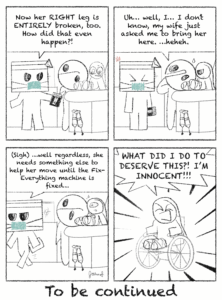This is the first of a three-article series by the Minority Student Advisory Board.
The Minority Student Advisory Board (MSAB) was established with the goals of serving to ensure the viability of historically underrepresented minorities at UR. We do this by maintaining a political agenda in the interest of historically underrepresented minority students and fostering cultural exchange within member organizations, individuals and the University community. The University must continue its goal of diversifying the school, and its students must have input into the administration’s decisions.
By 1999, after a sit-in by nearly 200 undergraduate students in the office of Thomas H. Jackson, the University’s ninth president, students had secured the University administration’s support in three areas. First, the Office of Minority Student Affairs was moved from the basement of Morey Hall to a more prominent and spacious place on the third floor. Second, a commitment was made to continue and increase University support for the Frederick Douglass Institute. Finally, in a declaration from President Jackson, it was stated that UR would seek to diversify its faculty, staff and students.
In 2005, President Seligman announced a task force to address the problem that we have been all too familiar with: faculty diversity. The task force was welcomed and saluted by many on campus and was seen as a step in the right direction. Even better, President Seligman accepted all 31 of the committee’s recommendations to address the lack of faculty diversity and appointed Lynne Davidson chair of the task force. This committee was chaired by Brain and Cognitive Sciences Professor Elissa Newport. However, the committee has since been eliminated and the diversity officer for the College is now Dean of Faculty Peter Lennie.
Certainly, we made great strides by appointing diversity officers in each school. However, the focus the institution gave to faculty diversity when the task force announced its recommendations has not continued. Everyone, from the administration and staff to the faculty and students, have been quiet about the institution’s commitment to progress, while some still wonder what the status of this initiative is.
For example, there has been a lack of clarification as to who is really responsible for faculty diversity, especially in the recent case of Davidson’s leave of absence. There remain faculty members and many students of the college who still do not know that Dean Lennie has recently appointed himself as the Chief Diversity Officer of the College. There are still questions regarding the actual goals of the faculty diversity initiative, which currently focuses on expanding the pool of candidates who are to be considered in order to be more inclusive.
The task force also included several recommendations regarding family friendly policies, which have mostly been implemented already. Yet, policies that were geared to increasing the number of underrepresented minority faculty members still face great challenges to meet the end goal of diversifying the faculty.
All of this is to say that, although we applaud the strong rhetoric that has been used to show commitment to diversity around campus, we still believe that there is a long way to go. It seems that if groups like MSAB, Black Students’ Union and Spanish and Latino Students’ Association do not impose upon the institution to keep the diversification of its faculty at the forefront of its agenda, then such attempts are forgotten. They are forgotten, not simply because of the administration, but because it seems that we, as a university, become too caught up with our rhetoric. We forget that labor is required from everyone to meet the projected goals. Even amongst our student body we become complacent. We do not raise questions about diversity and, instead, come in large numbers to town hall meetings with the agenda focusing on the coffee we drink or the food we eat while not even bothering to think twice about attending the town hall meeting about diversity. MSAB believes that the University can truly meet its goals of diversifying the faculty, staff and students.
It will take renewed commitment and it will take the entire University community to not simply talk about it, but to also be about it! Ten years from now, will we still be talking about the same issues in regards to diversity or will we truly have turned the page? Meliora: “Ever Better!”
Harrison is a Take Five Scholar.Carter is a member of the class of 2009.

